

Rob-n-Hild Take the High Road!
Click links to jump to specific days:
Start | Nerdy
| Stranger Things
| Stairs Stairs Stairs
|
|||||||||||||||||||||||||||||||||||||||||||||||||||||||||||||||
|
Lerwick |
|||||||||||||||||||||||||||||||||||||||||||||||||||||||||||||||
|
Margaret Ann and Adelaide Pottinger (Hild's grandmother and aunt)
in front of TC Pottinger store on Harbour Street in 1964. TC Pottinger
was Hild's grandfather, Thomas Christie.
The location of the shoe store on Harbour Street, Lerwick, is now empty and rather run down. We visited anyway in hopes of recreating an iconic photo in our family. |
|||||||||||||||||||||||||||||||||||||||||||||||||||||||||||||||

|
|||||||||||||||||||||||||||||||||||||||||||||||||||||||||||||||
| By merging 1964 and 2025 Hild and Rob can pretend to visit Grandma Pottinger and Auntie Adelaide during one of their workdays in the store. | |||||||||||||||||||||||||||||||||||||||||||||||||||||||||||||||
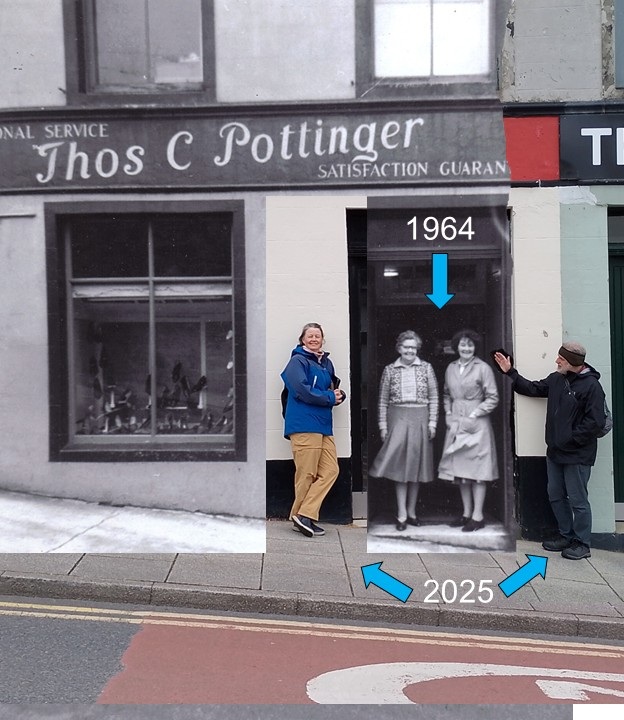
|
|||||||||||||||||||||||||||||||||||||||||||||||||||||||||||||||
|
On the Esplanade in Lerwick we found this crest boasting
"med lögum skal land byggja", which is part of a famous quote from
Norway's oldest law (Frostatingsloven). The full quote is
"at lögum skal land várt byggja en eigi at ulögum řyđa"
and translation is
"with law shall our land be built, and not desolated by lawlessness"
Maybe it now serves as a hint to locals and visitors that we should behave - or Detective Inspector Perez will get you? |
|||||||||||||||||||||||||||||||||||||||||||||||||||||||||||||||

|
|||||||||||||||||||||||||||||||||||||||||||||||||||||||||||||||
| On Victoria Key we spotted a famous boat - at least in Norway. The Berge Viking was visiting - supposedly still owned by the Bergesen family. Famous for being the first Norwegian boat to enter and finish the Whitbread round-the-world race. The race was in 1981-82 and they came 8th out of 29 starters. Only 20 boats finished. It took Berge Viking just over 126 days, while the winner took 119 days. | |||||||||||||||||||||||||||||||||||||||||||||||||||||||||||||||
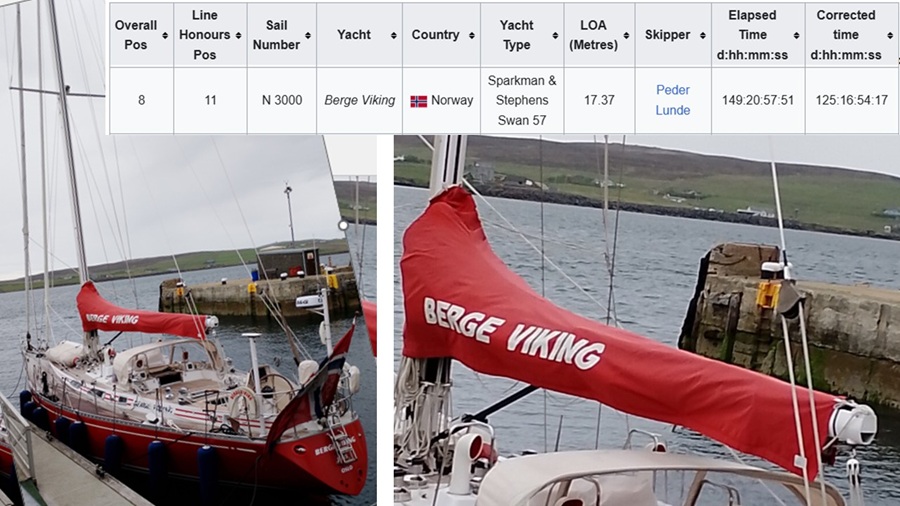
|
|||||||||||||||||||||||||||||||||||||||||||||||||||||||||||||||
| Further along Victoria Key lay Dragin - a sailing ship based in Faroe Islands. It was built in 1945 in Copenhagen, and it is still looking good. During the summer months you can hire it for boat trips in Klaksvik, so we are guessing it is on holiday in Shetland. Nice with a bit of a breather - even for boats. | |||||||||||||||||||||||||||||||||||||||||||||||||||||||||||||||
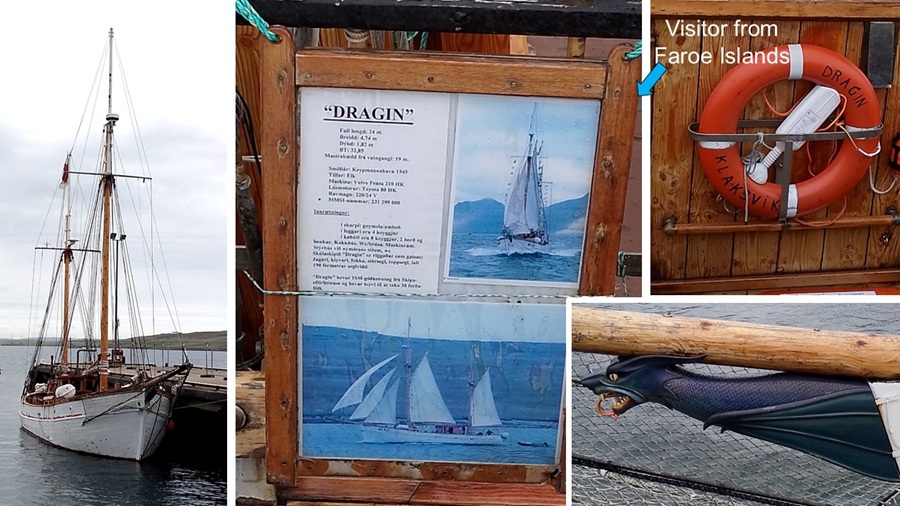
|
|||||||||||||||||||||||||||||||||||||||||||||||||||||||||||||||
| We keep bumping into two different bus companies. One is the J&DS Halcrow. I wonder if it is one of "our" Halcrows? | |||||||||||||||||||||||||||||||||||||||||||||||||||||||||||||||
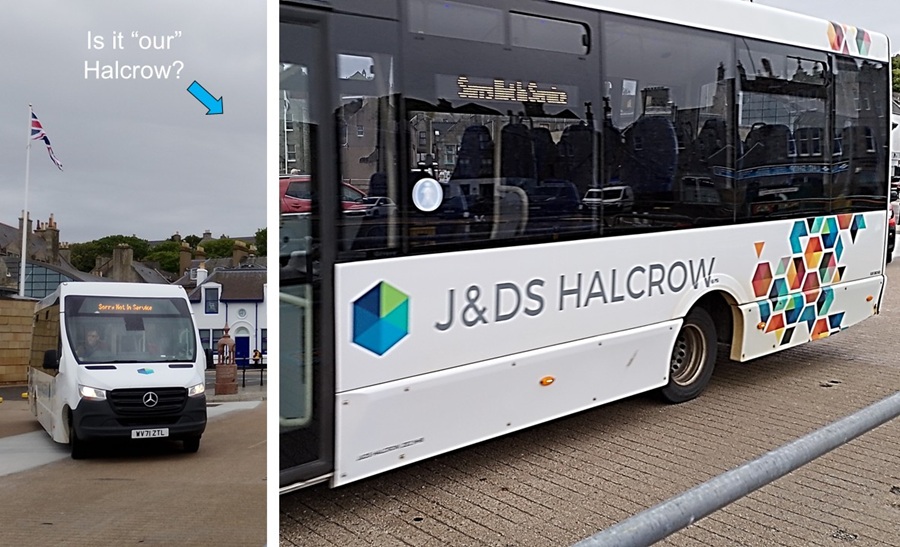
|
|||||||||||||||||||||||||||||||||||||||||||||||||||||||||||||||
| The other one is the Robertsons. I wonder if it is one of "our" Robertsons? | |||||||||||||||||||||||||||||||||||||||||||||||||||||||||||||||
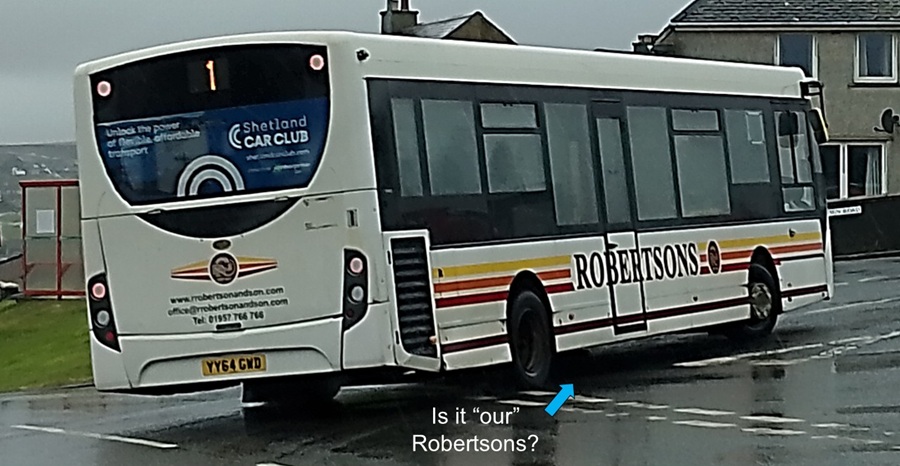
|
|||||||||||||||||||||||||||||||||||||||||||||||||||||||||||||||
|
We did another few hours in the Shetland Museum and Archives.
There is so much interesting to see and read about so we'll summarize...
To no great surprise, a lot of the story is about fishing. This is how they have been making a living since the start. The various ocean currents in the Atlantic and surrounding seas meet around Shetland and as water and plankton gets pushed up on the Continental Shelf it become dinner time for many fish and sea animals. Much time was also spent preserving the catch - including salting and drying like in this photo. |
|||||||||||||||||||||||||||||||||||||||||||||||||||||||||||||||

|
|||||||||||||||||||||||||||||||||||||||||||||||||||||||||||||||
| They used to make buoys from animal shins. Here are two examples, the one on the left looks like an entire skinned animal - legs and all. They had to spend a lot of time maintaining the homemade buyos by oiling the leather and reinflating them. | |||||||||||||||||||||||||||||||||||||||||||||||||||||||||||||||
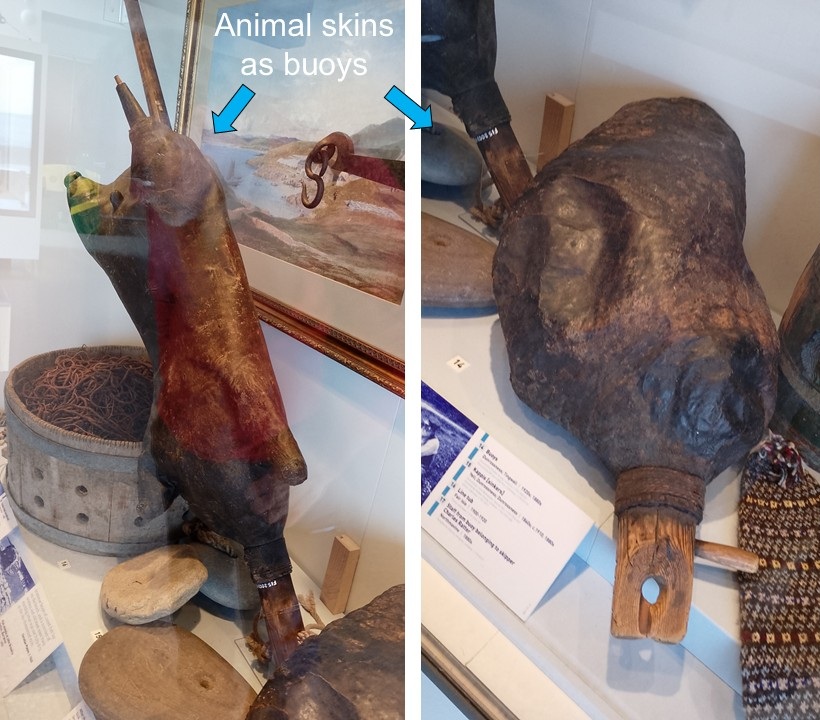
|
|||||||||||||||||||||||||||||||||||||||||||||||||||||||||||||||
| One exhibit illustrates how they used many ways to catch fish. They used buoys with weights to sink baited hooks. From their boats they lowered baited hooks tied to an iron rod and a sinker. They pulled baited hooks behind their boats. On lochs they fished from the shoreline using baited hooks tied to an otter board and a metal runner. And for those with patience and glass, they made waterglasses and a speargun to catch one flat fish at a time. | |||||||||||||||||||||||||||||||||||||||||||||||||||||||||||||||
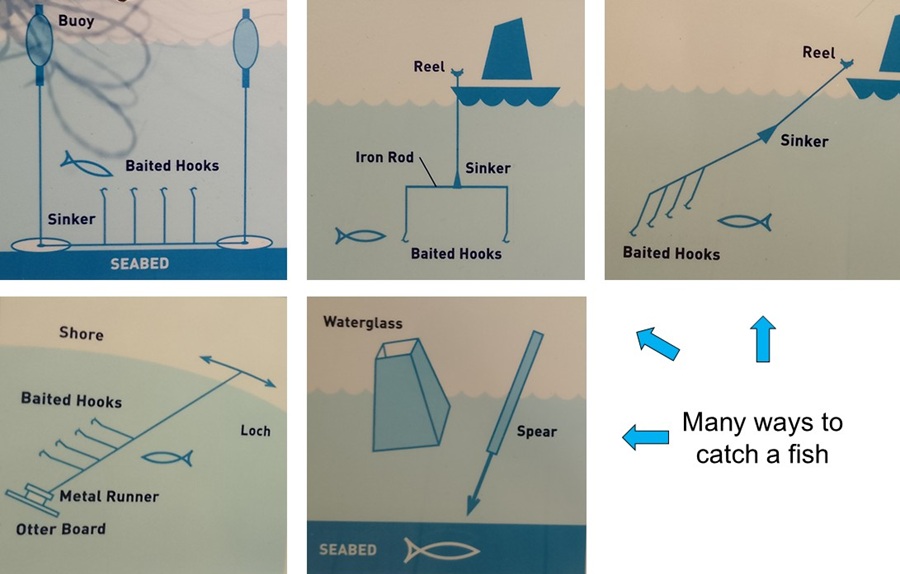
|
|||||||||||||||||||||||||||||||||||||||||||||||||||||||||||||||
| With the many bogs many made a living from cutting and selling peat. It was hard work carrying the peat off the bog. Both the sturdy Shetland ponies and men, women, and children had to participate. | |||||||||||||||||||||||||||||||||||||||||||||||||||||||||||||||
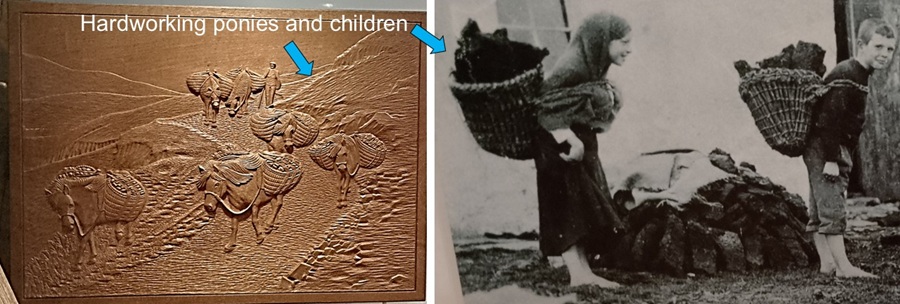
|
|||||||||||||||||||||||||||||||||||||||||||||||||||||||||||||||
| Keeping a cow was considered the most valuable farm animal. They made sure the cow was well fed and cared for so they could have milk as well as meat from offspring. | |||||||||||||||||||||||||||||||||||||||||||||||||||||||||||||||
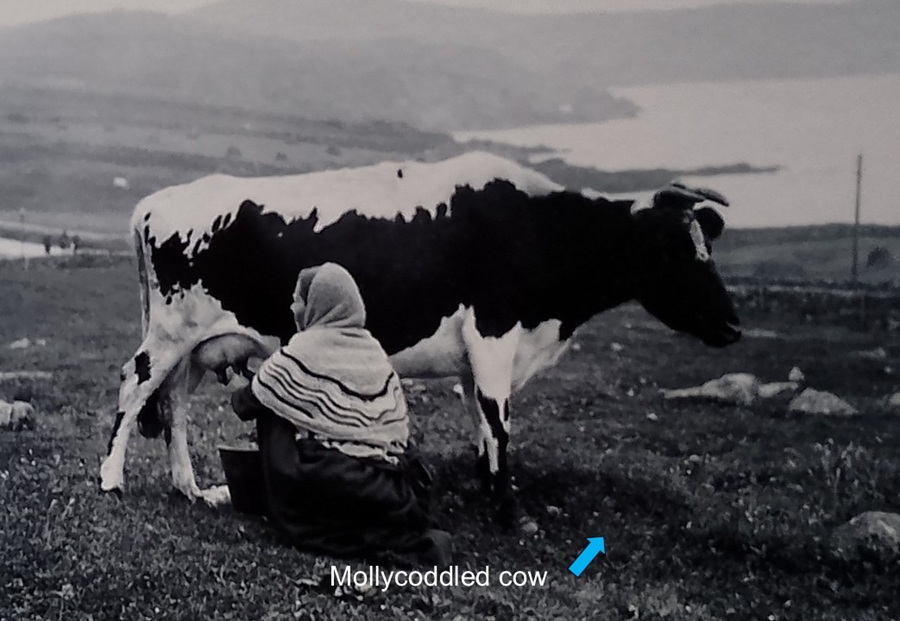
|
|||||||||||||||||||||||||||||||||||||||||||||||||||||||||||||||
| Shetland sheep are hardy now and probably even hardier back then. They survived on very little while sheltering on the moors. Here some are being herded on Unst in 1938. | |||||||||||||||||||||||||||||||||||||||||||||||||||||||||||||||
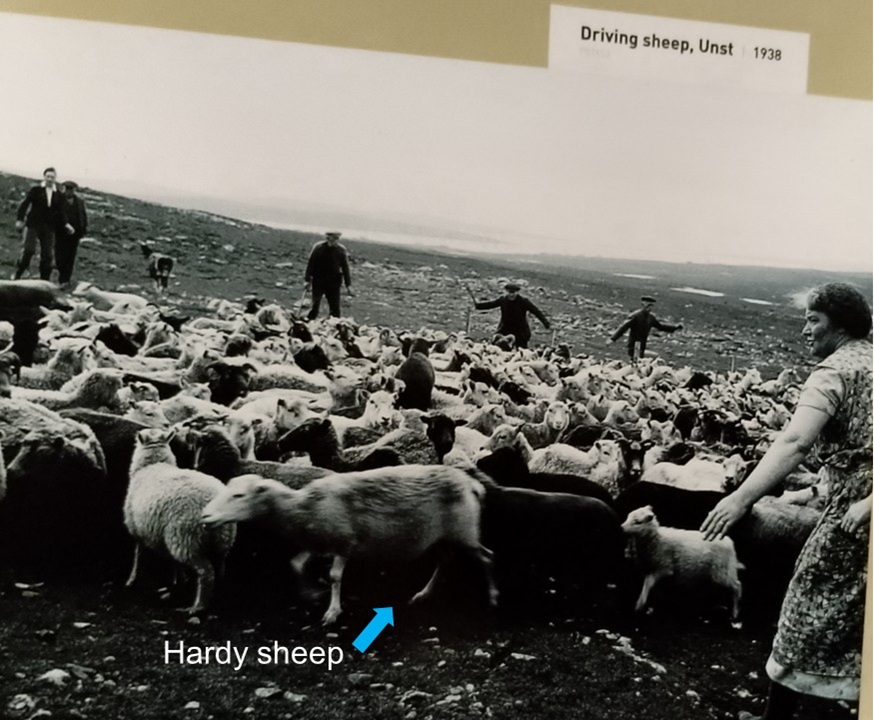
|
|||||||||||||||||||||||||||||||||||||||||||||||||||||||||||||||
| Apparently their meager feed meant that the wool was very thin so when they sheared the sheep the resulting yarn was perfect for beautiful shawls and sweaters. The Shetland knitting patterns have been fashionable at certain points in time, but it is time consuming to knit by hand. So there isn't much money in the business now. | |||||||||||||||||||||||||||||||||||||||||||||||||||||||||||||||
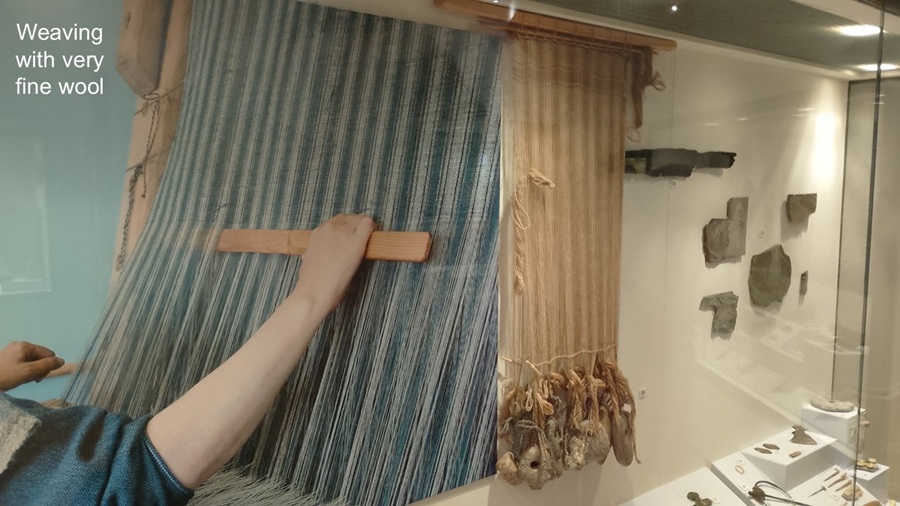
|
|||||||||||||||||||||||||||||||||||||||||||||||||||||||||||||||
| We spotted this wooden food box from Yell, and it looks exactly like the ones we have in Norway! | |||||||||||||||||||||||||||||||||||||||||||||||||||||||||||||||

|
|||||||||||||||||||||||||||||||||||||||||||||||||||||||||||||||
|
Shetlanders were supersticious, and to this day they consider how to avoid
some curses.
It seems logical that your boat may be prone to sink if there are black knots in the wood. The knot may come loose over time and cause your boat to spring a leak. However, if the knot is shaped like a ling, tusk, or a cod it is a sign of good fortune. |
|||||||||||||||||||||||||||||||||||||||||||||||||||||||||||||||

|
|||||||||||||||||||||||||||||||||||||||||||||||||||||||||||||||
| If you make the mistake of turning your boat anti-clockwise you can only fix your mistake by turning it back clockwise three times. We'll watch the actions of boats around us more closely from now on - just to be prepared for misfortune. | |||||||||||||||||||||||||||||||||||||||||||||||||||||||||||||||
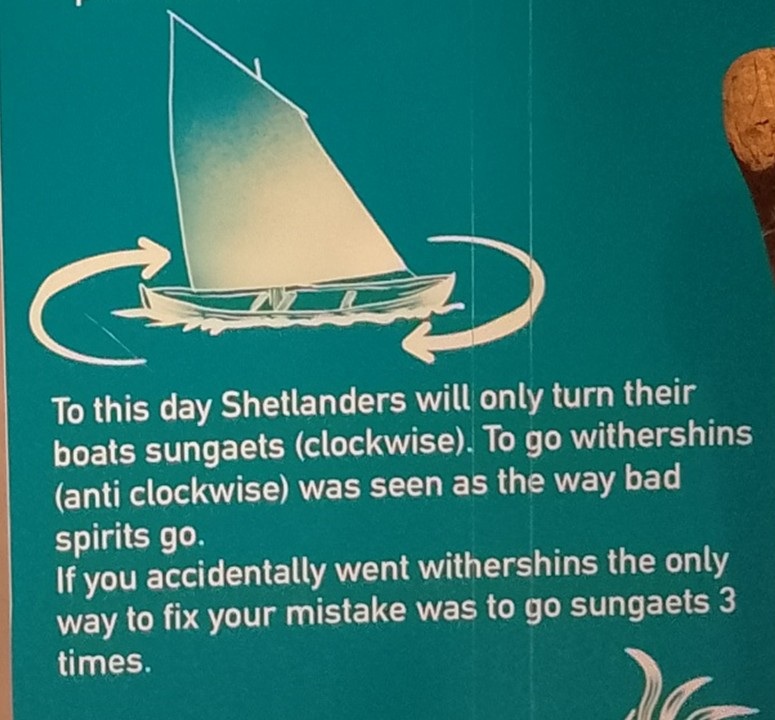
|
|||||||||||||||||||||||||||||||||||||||||||||||||||||||||||||||
| At various locations throughout the Museum they were catering to tired tourist: folding chairs were provided for those that needed to sit down. Nice! | |||||||||||||||||||||||||||||||||||||||||||||||||||||||||||||||
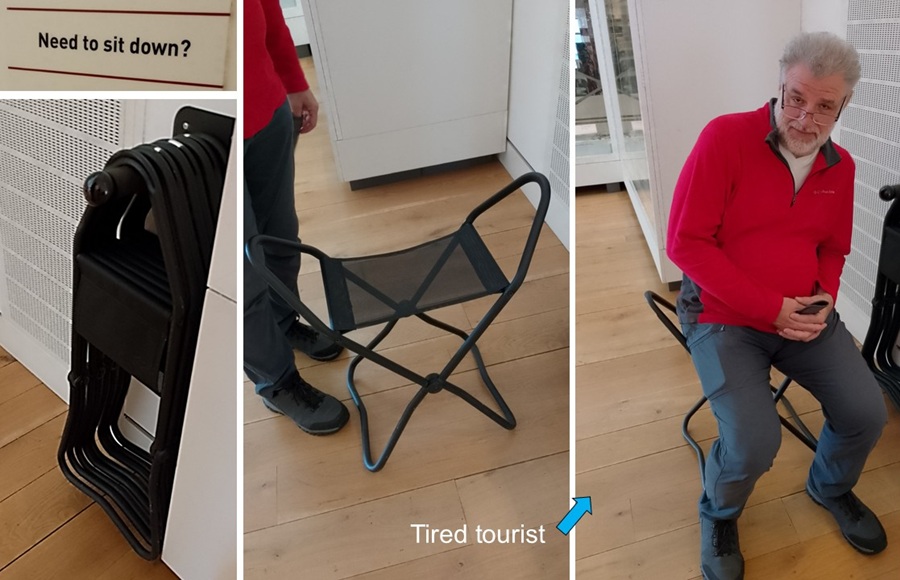
|
|||||||||||||||||||||||||||||||||||||||||||||||||||||||||||||||
| Thankfully, our now regular Harbour Cafe caters to hungry tourists. Notice how this time there is TWO tattie scones. Woohoo! | |||||||||||||||||||||||||||||||||||||||||||||||||||||||||||||||
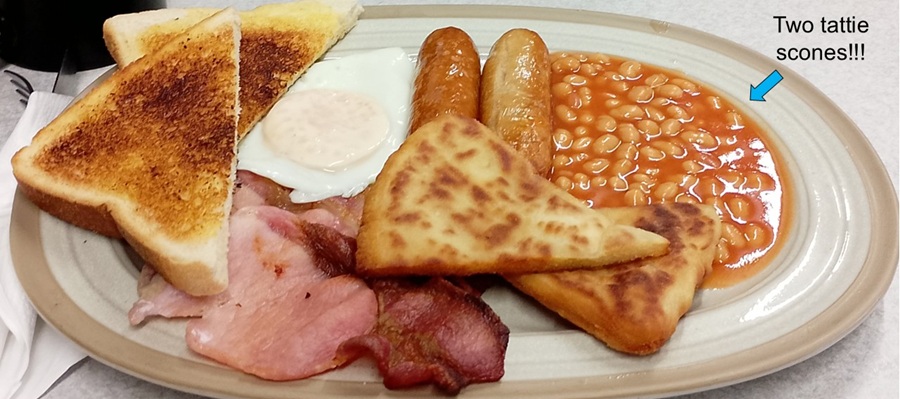
|
|||||||||||||||||||||||||||||||||||||||||||||||||||||||||||||||
| Coming up: Burra Isles | |||||||||||||||||||||||||||||||||||||||||||||||||||||||||||||||
Start
| To Previous Day
| To Next Day
| Nerdy
| Stranger Things
| Stairs Stairs Stairs
May-July 2025
May-July 2025

